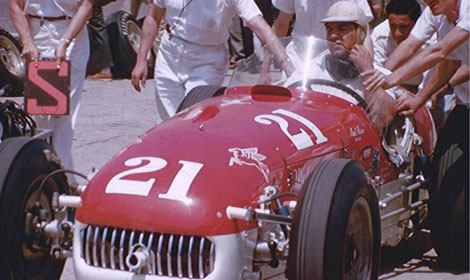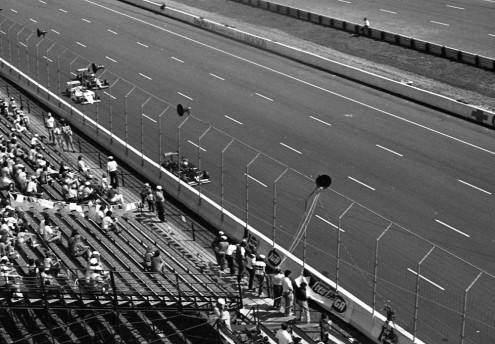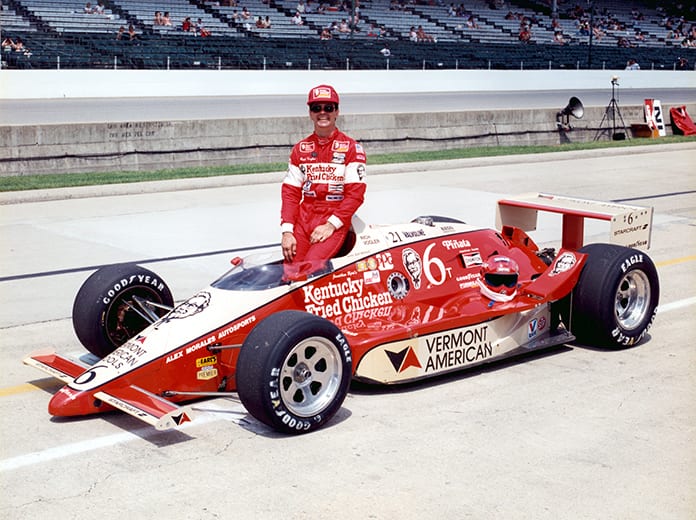Through 85 years, SPEED SPORT has covered all of racing’s major events. We dug into the archives to take a look at some of the unique stories we’ve covered over the years.
- Gasoline Alley
Paterson, N.J., was ground zero for Depression era racers to spend their summers while competing on the East Coast. A specific area in town became known as Gasoline Alley.
- Midgets
Midget racing began in California in June 1933, an evolution of the so-called Big Cars. Midgets brought racing to small towns and country fairgrounds, creating a huge new audience of fans.

- The Offy
Commissioned by Earl Gilmore and designed by Leo Goossen, the Offenhauser midget engine came to fruition in the late 1930s and dominated the sport for years.
- AAA Leaves
Stung by tragedies at Indianapolis Motor Speedway and the 24 Hours of Le Mans during the 1955 season, the American Automobile Ass’n withdrew from sanctioning races, leaving a huge void in the sport.
- USAC Arrives
With AAA out of the sport, the United States Auto Club was created to organize open-wheel racing from coast to coast.
- NASCAR
The first NASCAR Strictly Stock race was run on June 19, 1949, at Charlotte Fairgrounds Speedway with Jim Roper scoring the victory.

- Daytona
After decades of racing on Daytona Beach, NASCAR founder Bill France built Daytona Int’l Speedway. The 2.5-mile superspeedway opened in 1959 with Lee Petty winning the inaugural Daytona 500 in a photo-finish.
- Off The Streets
Wally Parks founded the National Hot Rod Ass’n in 1951, taking drag racing off of the streets and on to race tracks.
- Knoxville
The inaugural Knoxville Nationals was run in 1961 with Roy Robbins claiming the $1,000 first-place prize at Iowa’s Knoxville Raceway. The event will be run for the 59th time Aug. 7-10, paying $150,000 to win.
- Eldora
Earl Baltes built Ohio’s Eldora Speedway in 1954 as a quarter-mile dirt oval. The track was lengthened to a half-mile in 1958 and its legend grew from there. Baltes operated the track until 2004 when it was sold to NASCAR champion Tony Stewart, who continues to upgrade the facility.
- Chili Bowl
Emmett Hahn and Lanny Edwards could never have imagined what was to come when they organized the first Chili Bowl Midget Nationals indoors in Tulsa, Okla. After Rich Vogler won the inaugural two-night race in 1987, the event has grown to six nights of racing and become iconic in the racing world.
- The Outlaws
The first World of Outlaws sprint car race was run at Devil’s Bowl Speedway on March 18, 1978, with Jimmy Boyd taking the checkered flag.

- Open-Wheel Wars
USAC controlled Indy car racing until 1979 when Championship Auto Racing Teams was created. The Champ Car World Series ruled the roost until the Indy Racing League was created in 1995 and ran its first race the following season.
There were a pair of Indy car series for more than a decade, but in 2008 the two series were united under the IndyCar banner.
- $1 Million
Donnie Moran earned $1 million for winning the inaugural running of The Dream dirt late model race at Ohio’s Eldora Speedway. The one-time $1 million winner’s purse was the brainchild of promoter Earl Baltes.
- British Invasion
It wasn’t the Beatles, but for motorsports it may have been bigger. When Jack Brabham drove the first rear-engined car at Indianapolis Motor Speedway in 1961, it marked the beginning of the end for the traditional front-engined roadster. Jim Clark completed the transition by winning Indy in a rear-engined machine in 1965.
- 200
Tom Sneva was the first to turn a 200-mph lap at Indianapolis Motor Speedway, turning a 200.535 mph circuit of the 2.5-mile track in 1977.

- Four-Timers
A.J. Foyt became the first of three four-time Indianapolis 500 winners in 1977. Al Unser won his fourth 500 in 1987 and Rick Mears topped The Greatest Spectacle in Racing for the fourth time in 1991.
- The Beginning
When Dick Vieldhouse sold a single ad to the Pyroil Co. in 1932, it led to the Bergen Herald adding a racing section. Two years later, the first issue of National Auto Racing News was published. The name was changed to National Speed Sport News in 1943 and the rest is history.

- Column Names
The columnists whose words have appeared in the pages of SPEED SPORT are far too many to name, and so are the colorful names of the columns.
We felt it appropriate to share our favorites: Benzine Banter, Speed Talk, Allegheny Amblings, California Comments, Motor City Memo, Goggle Gossip, The Ambling Announcer, Chicago Chips, Chicago Sparks, Tappet Noise, Back Fire, Neptune Notes, Racing Daze and Knights, Midget Muttering, Round and Round, Speedway Sputterings, The Railbird, Hoosier Hoopla, Rebel Rods, The Long Look, American Scene, West Coast Wanderings, Hill On Wheels, Racing About, Illini Inklings, The Grandstand View, Yankee Clippings, Motor Mumblings, Hoosier Hilites and Diggings, Doings & Dirt.
- One Of Many
Don Figler is one of the many volunteer contributors to SPEED SPORT through the years.
Don has photographed racing from the local short tracks near his home in St. Louis to the Indianapolis 500. Without Don and hundreds like him located from coast to coast, SPEED SPORT would never have existed
We thank you all.
